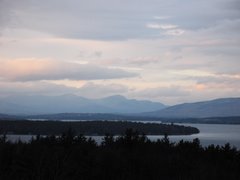We’re on VACATION!!!
We set off westward found ourselves near the Massachusetts-New York border by lunch time, so we had a home-packed lunch of sandwiches and strawberries at Tanglewood, right in front of the Hawthorne Cottage. What a great start – a picnic in a place permeated with music and literature, my favorites!
***
In the car on the way to New York I was so pleased when my daughter asked, “Is this Holst?” and started humming along to Jupiter. I also played a mix of violin selections, some of which included Joshua Bell in belated honor of his busking experience.
I always think of Perlman when I hear the Mendelssohn concerto and of Gil Shaham when I hear Sarasate’s Zigeunerweisen. Thoughts of Perlman made me recall Youtube footage of a master class he taught in Russia. What a great “bedside manner!” He was supportive of his students, acknowledged them as musicians without being condescending, and offered corrections in a way that was so clearly meant to help the musician be the best he or she could be. Watching one of Heifetz’s master classes (the clip I saw is no longer up) gave me a totally different feeling – intimidated, threatened, disdained, like my hard work and efforts would cause the guy nothing but exasperation. It was like reliving residency all over again. He’s such an unbelievable technical wonder, though.
I believe teaching should come from a love of what is being taught and a desire to transmit that love to one’s students, and with it the commitment to strive for excellence. I believe in respecting students, whatever their abilities or background, and in approaching them with an attitude that says, “I believe you can learn this, and it’s my job to help you do that, and it’s okay if you have a hard time with it at first.” No condescension, put-downs, scorn, resentment, or rage when something is not known or understood or immediately done well by the student. In other words, the opposite of most medical education, at least in my experience.
I hope when I teach I come across more like Perlman.
***

We spent the afternoon at the Shrine of the North American Martyrs in Auriesville, NY – a peaceful place with a gigantic round church surrounded by meadows and trees. It was a personal pilgrimage of sorts for me – the patron saint of anesthetists, St. René Goupil, died there after being tortured for weeks with his fellow-captives. I was surprised that a place with such a sad and violent history should have such tranquility about it. My husband and children were very supportive of my desire to visit this place, “where Mommy’s special saint died.” Our favorite part of the visit as a family walking down the ravine where René was killed by two natives and later buried, in an unknown location, by his friend St. Isaac Jogues. Posted for visitors to read on the trail down were excerpts of Jogues’s first-hand account of René’s death. It was an indescribably peaceful walk, despite the tragic story, and at the bottom the trail suddenly opened up into a beautiful clearing, where we spent several minutes just enjoying the sacred atmosphere of the place. It was strange to think part of him was still physically there, somewhere in that clearing, and wonderful to enjoy the silence of the place. It’s not often any of us has a chance to enter into some quiet contemplation on our own, much less as a family, so this moment of tranquility and renewal was like a drink of water in the desert.

___________________________________________________________
Addendum, July 11, 2007:
Found this description from a reflection by William McNichols, S.J.: "Walking down the pathway into the ravine at Auriesville where it is said René was murdered, one knows why pilgrims come especially to the ravine, and will always come there. For it is in the ravine that one senses something of God - some touch, some peace, some blessing. This place does not attract the sensation seeker, looking for the morbid or the macabre. Rather, one finds that the earth there, sown in red seeds, has brought forth a verdant, shimmering landscape Pope Pius XII called 'Nature's Reliquary.' " Jesuit Bulletin. Fall 1984. p.12-14.







No comments:
Post a Comment